Have you ever wondered what makes some pearls so beautiful and valuable? You should then look at keshi pearls. They’re like little accidents of nature, masterpieces that have been fascinating jewelry lovers for ages. They’re rare, stunningly beautiful, and really stand out in the pearl world. This is a perfect example of what a keshi pearl is.
What is keshi pearl, exactly? Simply put, keshi pearls are solid-nacre pearls that form as an unplanned byproduct during the cultured pearl creation process. Unlike traditional cultured pearls, they develop without a nucleus, making each one completely unique in shape, size, and character.
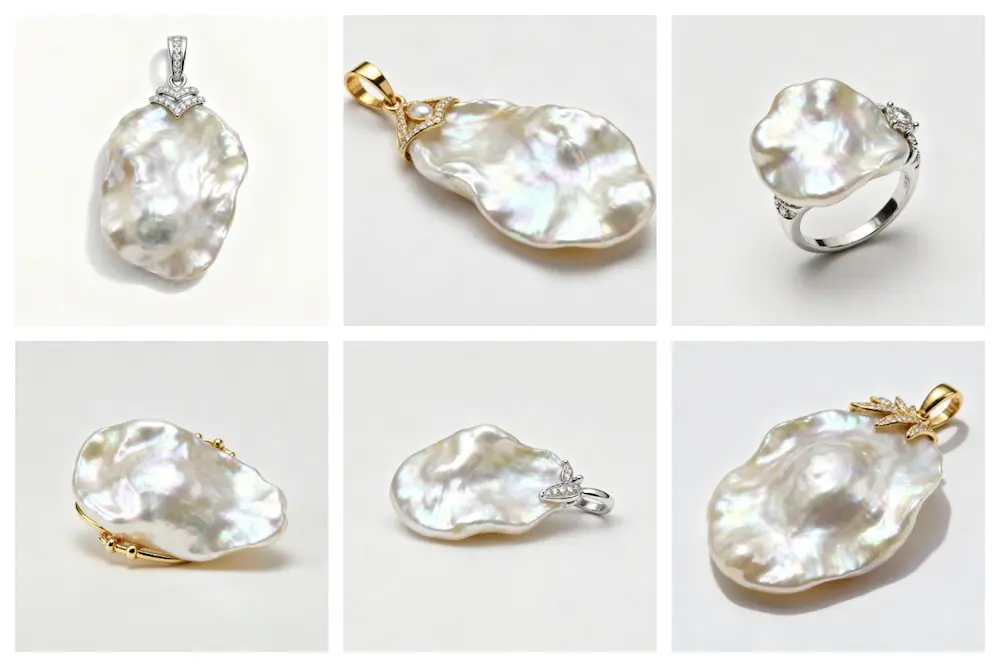
The Fascinating Origin Story of Keshi Pearls
To truly appreciate their unique qualities, you must know how what is a keshi pearl is made. The word “keshi” comes from Japanese and means “poppy seed,” which is a nod to the small, irregular shapes they often have.
When pearl farmers want to grow regular pearls, they put a bead in an oyster. But sometimes the oyster doesn’t want that bead. The tissue that was put in with the bead stays in place and keeps making nacre, which is the substance that makes up the pearl. What is keshi pearl: layers of nacre build up over time without a nucleus.
This natural process of rejection is what makes a keshi pearl so special. Even though they are found on pearl farms, they grow in the same way that natural pearls do, which makes them a true gift from nature.
The Science Behind Keshi Formation
A keshi pearl’s formation is actually influenced by the kind of oyster used. According to studies conducted by the Gemological Institute of America (GIA), various oyster species produce distinct varieties of keshi pearls, each with special characteristics.
The mollusk’s biological reaction is what actually determines the formation of keshi pearls. To understand what is a keshi pearl at its core, you must look at this process: The oyster’s natural defense mechanism is triggered by the expelled nucleus, which causes the remaining organic tissue to gradually cover the irritant with layers of nacre. Pearls with remarkable luster and durability are the result of this process, which can take several years.
5 Distinctive Types of Keshi Pearls You Should Know
The type of keshi pearl you end up with really boils down to the kind of shellfish that creates it. Let’s take a look at the main types – this will help you understand more about what a keshi pearl actually is:
1. Akoya Keshi Pearls
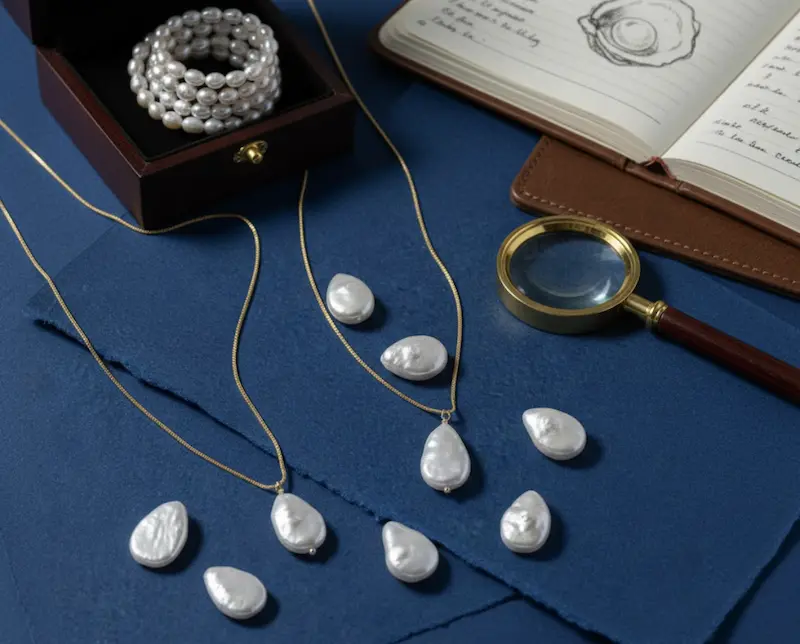
These are really the first keshi pearls ever found! Back in the 1920s, they started popping up in oyster farms in Akoya, Japan. Akoya keshi pearls are highly valued for their amazing shine. Akoya keshi pearls come in colors like white, cream, and sometimes even pink or silver. While they tend to be smaller in size, they’re still incredibly bright and lustrous!
2. South Sea Keshi Pearls
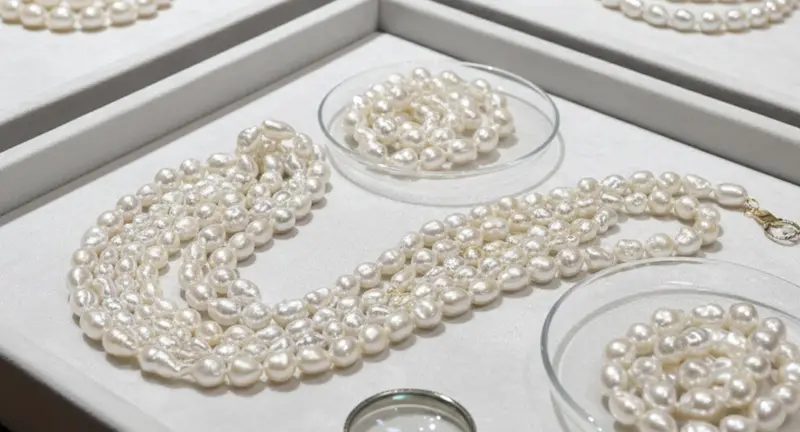
South Sea keshi pearls come from the big Pinctada maxima oysters, and they’re known for being super valuable. Seeing those golden and white ones really shows you how luxurious they are. And they can get a lot bigger than Akoya pearls, and their thick nacre gives them a beautiful mirror-like shine.
3. Tahitian Keshi Pearls
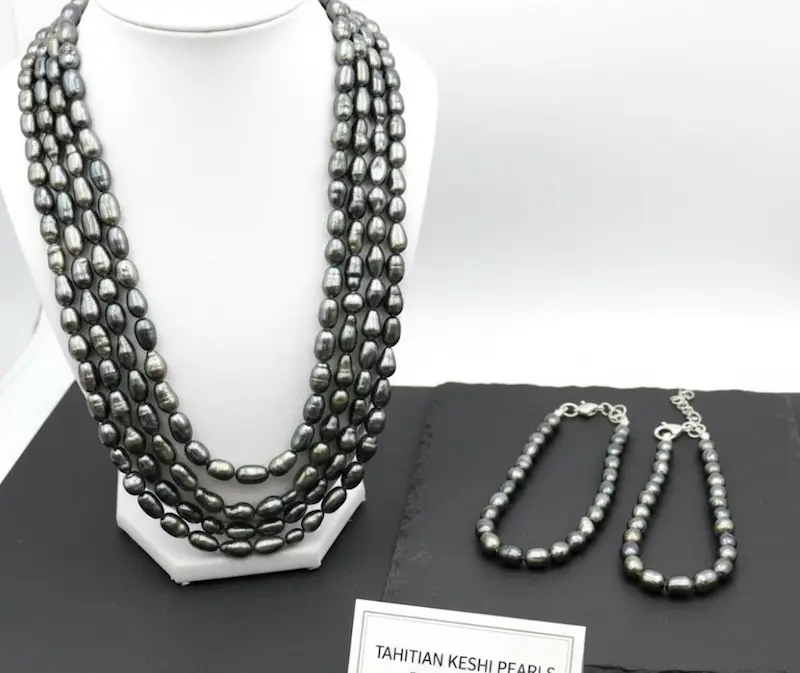
Born from the black-lipped Pinctada margaritifera oysters of French Polynesia, these pearls showcase dramatic dark colors with peacock, green, and silver overtones. Understanding what is keshi pearl mystique often starts with seeing a stunning Tahitian keshi’s natural color play.
4. Freshwater Keshi Pearls
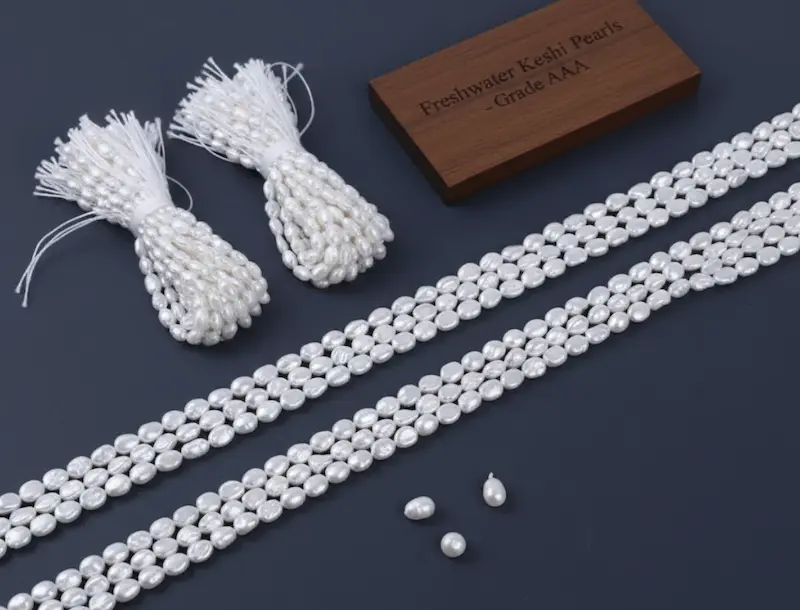
While less common, freshwater mussels can also produce keshi pearls. These tend to be more affordable while still offering the solid nacre construction that makes keshi pearls so special.
5. Cortez Keshi Pearls
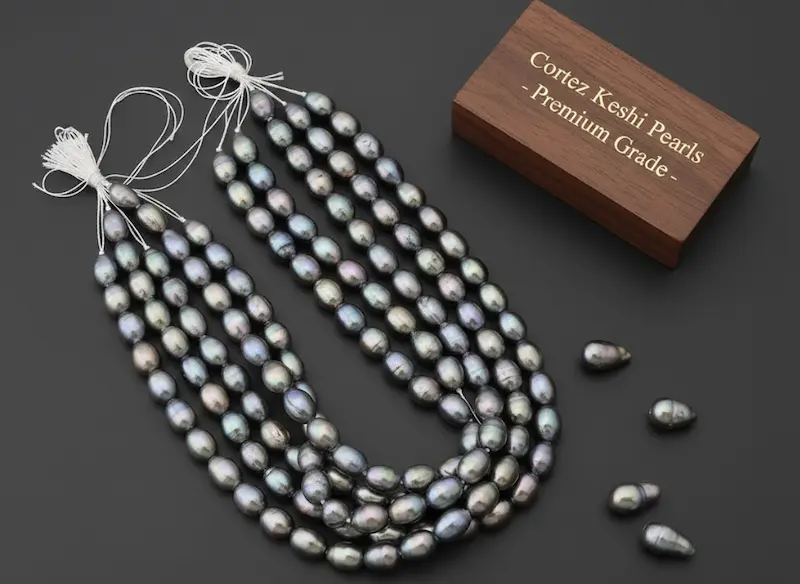
These rare gems come from the rainbow-lipped oyster (Pteria sterna) found in Mexico’s Cortez Sea. What is keshi pearl rarity reaches its peak with Cortez varieties, which display incredible color combinations and are highly sought after by collectors.
The Unique Characteristics That Define Keshi Pearls
What is keshi pearl appeal lies in several distinctive features that set them apart from conventional cultured pearls:
- Solid Nacre Construction: Unlike nucleated pearls, keshi pearls consist entirely of nacre layers. This gives them exceptional durability and a unique inner glow that’s hard to replicate.
- Irregular Baroque Shapes: Since they form without a round nucleus, what is keshi pearl shape becomes is naturally baroque and irregular. No two keshi pearls look exactly alike, making each piece of jewelry truly one-of-a-kind.
- Exceptional Luster: The solid nacre construction creates incredible light reflection properties. Many pearl enthusiasts consider keshi luster superior to traditional cultured pearls.
- Size Variations: What is keshi pearl dimensions can vary dramatically, from tiny seed-like formations to substantial specimens several centimeters across.
Evaluating Keshi Pearl Quality and Value
You need to know what makes a good keshi pearl in order to find out how much one is worth. Pearl experts look at a few things:
- Luster Quality: This is the big one! The shine and reflection of the pearl is the most important thing. A high-quality keshi pearl will have a sharp, mirror-like reflection with a noticeable difference between the bright and dark areas.
- Size: Larger specimens are increasingly rare, making them more valuable. What is keshi pearl size means in terms of value varies by type, but generally, bigger equals more expensive.
- Color: Natural colors command premium prices. Golden South Sea keshi pearls and multicolored Tahitian varieties typically fetch the highest prices.
- Shape: All keshi pearls are baroque, but some shapes are more sought after than others. Symmetrical or very artistic formations are highly valued.
- Surface Quality: Like all pearls, cleaner surfaces with fewer flaws make the pearl worth a lot more.
| Pearl Type | Average Price Range | Size Range | Notable Characteristics |
|---|---|---|---|
| Akoya Keshi | $50-$300 per piece | 2-8mm | Exceptional luster, classic white/cream colors |
| South Sea Keshi | $200-$2,000 per piece | 8-20mm | Large size, golden colors, thick nacre |
| Tahitian Keshi | $100-$1,500 per piece | 8-15mm | Dark exotic colors, peacock overtones |
| Freshwater Keshi | $20-$200 per piece | 6-15mm | Affordable option, good luster |
| Cortez Keshi | $300-$5,000 per piece | 8-25mm | Extremely rare, unique color combinations |
How Keshi Pearls Compare to Other Pearl Types
When you look at other kinds of pearls, their benefits become clear, especially when you understand what is a keshi pearl. Unlike regular cultured pearls, which have a bead inside, keshi pearls have some cool benefits:
Durability: Because they are made entirely of nacre (the pearly stuff), they are stronger and less likely to get damaged than cultured pearls that have a thin outer layer.
Individuality: The shape of each keshi pearl is different and not regular. This means no two pieces of jewelry will ever look exactly alike!
Natural Formation: Even though they’re found during pearl farming, they form naturally without a bead being inserted. This makes them closer to “natural” pearls.
Investment Value: High-quality keshi pearls can actually increase in value over time. This is because they’re rare and have unique characteristics.
When you’re looking to buy wholesale pearls, many sellers will specifically point out keshi pearls because they’re so appealing and in high demand.
The Modern Keshi Pearl Market and Trends
The pearl industry knows that what is a keshi pearl is more than just a byproduct these days. Jewelry designers love them because they have natural shapes and a unique luster.
Jewelry Design: Modern jewelry designers love to use keshi pearls to make bold, eye-catching pieces that really show off the natural beauty of the pearls. You can often find them in mismatched earrings, artistic pendants, and pearl necklaces that show off how unique and irregular they are.
Collectible Items: People who are really into collecting pearls often try to get as many keshi pearls as they can. They are especially interested in rare types, like Cortez keshi pearls or really nice South Sea pearls.
Sustainability Factors: Keshi pearls are generally thought to be good for the environment, which is a nice thing about them. To understand what is keshi pearl, you should know that they don’t need any extra resources to make because they are basically a byproduct of pearl farms that are already there.
Current Market Trends
These days, the luxury jewelry world is really into unique, natural-looking gems. That’s why keshi pearls are so popular—they perfectly capture the trend for handcrafted and more natural jewelry, especially as more people learn what is keshi pearl.
Thanks to celebrities and high-end designers featuring them, keshi pearls have blown up in popularity! Fashion-conscious shoppers especially love that they look great with everything from jeans to evening gowns.
Caring for Your Keshi Pearl Jewelry
If you take good care of your keshi pearl jewelry, it will remain gorgeous for many generations to come. The first step in properly caring for a keshi pearl is to comprehend what it is and its unique characteristics.
- Cleaning: To clean your pearls, use only lukewarm water and a mild soap. Ultrasonic cleaners, steam cleaners, and harsh chemicals can damage pearls’ delicate surface.
- Storage: To prevent scratches, keep your keshi pearl jewelry apart from other jewelry. Your jewelry box should have separate sections or soft pouches.
- Wearing: When getting dressed, take off the pearls first and then put them on last. Fragrances, body oils, and cosmetics can all eventually dull their luster.
- Professional Maintenance: How should one wear a keshi pearl and what is a keshi pearl? When dressing, put on your pearls last and take them off first. Cosmetics, body oils, and fragrances can all eventually make them less shiny.
Investment Potential and Future Outlook
Keshi pearls are becoming more popular as investments because they are so rare in the gem world. More and more people are learning what keshi pearl is, which is making them more popular. Here are some reasons why they might keep their value:
- Limited Supply: People don’t farm Keshi pearls on purpose; they just happen to find them. So we can’t just make more to meet demand. They are worth more because they are hard to find.
- Growing Appreciation: Keshi pearls are becoming increasingly popular worldwide as more people appreciate their beauty and individuality.
- Artistic Value: Designers and jewelers love the unique, organic shapes, which keeps the market super interested.
Pearl experts agree that high-quality keshi pearls, particularly the rarer ones from top pearl-producing regions, have consistently increased in value over the last 10 years.
Conclusion: Embracing Nature’s Accidental Masterpieces
Understanding what is keshi pearl really shows you why these gems are so special in jewelry. They’re proof that nature can create something beautiful out of unexpected situations, turning what pearl farmers used to see as waste into highly prized treasures.
Whether you love the mirror-like shine of Akoya keshi pearls, the vivid colors of Tahitian ones, or the impressive size of South Sea keshi pearls, each type has something unique to offer. The magic of understanding what is keshi pearl lies in how they’re naturally formed, their exceptional beauty, and the unique character that makes each one truly one-of-a-kind.
As the pearl industry keeps changing, keshi pearls are a perfect example of how nature’s randomness can lead to some of the most beautiful and valuable gems on Earth. If you’re thinking about adding pearls to your collection, understanding what is keshi pearl unlocks a whole new level of appreciation for some of nature’s most remarkable, accidental creations.
Next time you see a keshi pearl with an unusual shape and incredible shine, you’ll know it’s something very special—a gem that wasn’t planned but came about because nature found a way to make beauty out of chaos.
FAQs
Are keshi pearls more valuable?
Not always. Top keshi can out-price average cultured pearls, but fine round cultured pearls still command the highest premiums.
What is the difference between keshi pearls and pearls?
Keshi are 100 % nacre, formed accidentally without a nucleus; ordinary cultured pearls grow around a mother-of-pearl bead.
What are the benefits of keshi pearl?
Pure-nacre glow, light weight, unusual baroque shapes, often eco-friendly by-product of pearl farming.
What makes keshi pearls unique?
All-nacre structure gives intense luster; every piece is an irregular, one-of-a-kind “accidental” pearl.

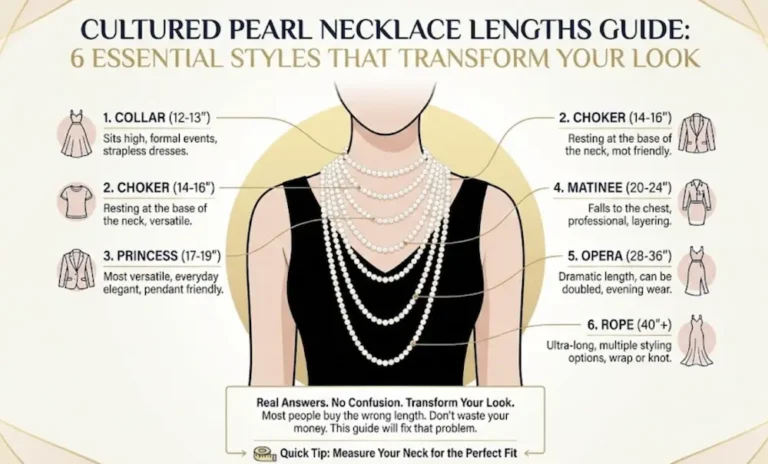
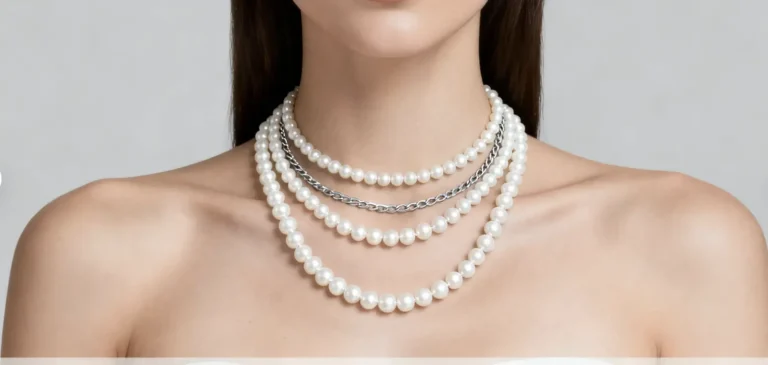
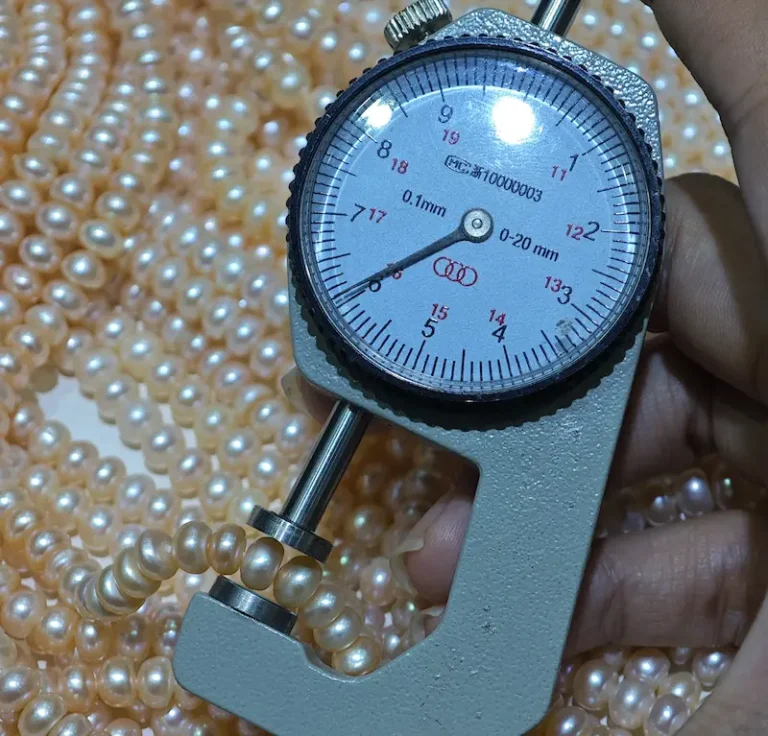

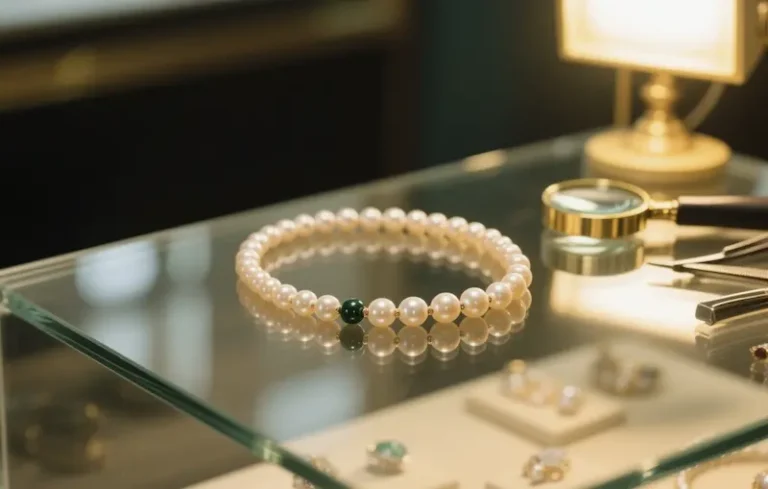
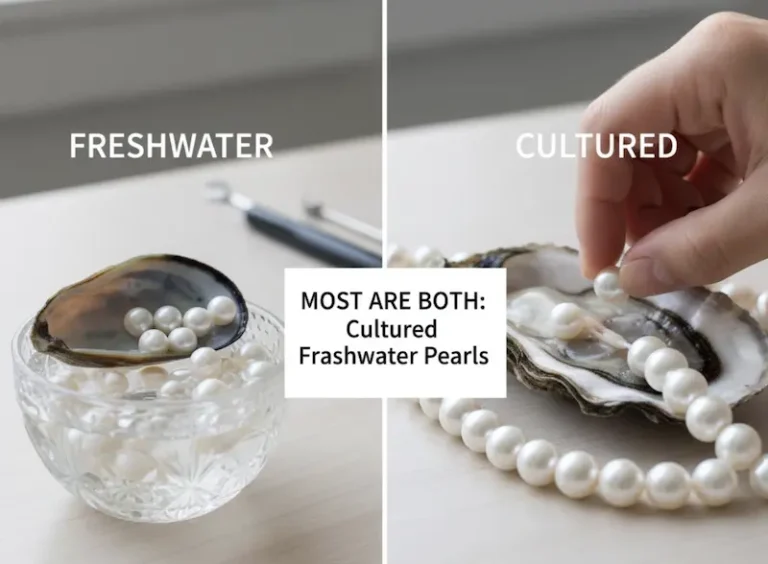

One Comment